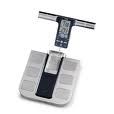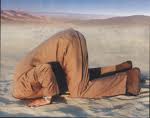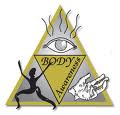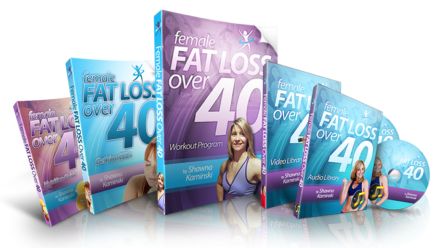28
Jun 10
 I have a new way of measuring body fat that I’m using in my boot camp. It is a body impedance scale that measures weight, body fat, skeletal muscle, visceral fat, BMI and resting metabolic calories. I love this scale because it’s quick and easy and doesn’t require my pinching anyone in their most embarrassing body parts. (And admittedly, there’s NO math as there was when I did calliper testing, love that part.)
I have a new way of measuring body fat that I’m using in my boot camp. It is a body impedance scale that measures weight, body fat, skeletal muscle, visceral fat, BMI and resting metabolic calories. I love this scale because it’s quick and easy and doesn’t require my pinching anyone in their most embarrassing body parts. (And admittedly, there’s NO math as there was when I did calliper testing, love that part.)
So, the disappointing thing about this new scale is that the reading that this scale spits out is MUCH higher than the body fat reading my clients were getting when we did a body fat test with the Futrex Bod-E-Comm tester.
I need to point out some facts regarding ANY form of body fat analysis so as not to freak anyone out.
 First of all, I believe it’s imperative that everyone should take advantage of any opportunity to learn about their body. I know that several of my clients would prefer not to know what their weight is or their body fat percentage. I know that the number is not always pleasing, but the not knowing does not change the number or percentage. We need to face the number and realize that it is JUST A NUMBER. Once we get this through our heads, it’s a little easier to face. We need to stop fixating on what we would like the ideal number to be, and start thinking about how we can get it to a more realistic number.
First of all, I believe it’s imperative that everyone should take advantage of any opportunity to learn about their body. I know that several of my clients would prefer not to know what their weight is or their body fat percentage. I know that the number is not always pleasing, but the not knowing does not change the number or percentage. We need to face the number and realize that it is JUST A NUMBER. Once we get this through our heads, it’s a little easier to face. We need to stop fixating on what we would like the ideal number to be, and start thinking about how we can get it to a more realistic number.
For example, if I want my weight to be 120 lbs, a weight I was before having babies and maybe when I was in high school, this may not be a realistic weight to want to see when I hop on the scale and see 160 lbs. I will no doubt be disappointed to see that the number has increased since high school, but I need to get on the scale anyway.
The other reason I want to face the scale is that if I’m up 5 lbs, it’s best to know this before that number gets to 10 or 15 lbs. Too many people would prefer to bury their heads in the sand and then find a completely overwhelming number when they eventually get on the scale. If this is you, well, suck it up, get on the scale and don’t let that number overwhelm you, but let it motivate you to start moving and changing your dietary habits so that it doesn’t become a bigger number. Knowledge is power. Not knowing will not empower you to change any part of your lifestyle.
So, I want to encourage everyone to please take advantage of the opportunity to weigh or measure yourself, whether it is in my boot camp or any where. Take the number with a grain of salt and use it as a tool to measure your fitness progress, not as a stick to beat yourself up with.
Now, ALL methods of body fat analysis are inherently inaccurate. Keep this in mind with what ever method you’re using. This helps you to let go of the number and just use it as a tool. The gold standard of body fat analysis is hydro-static weighing (or under water weighing), but even this method has some limitations. So make sure that whatever method you use, that it is the SAME over time. This way, you can compare apples to apples.
For example, with my old method of body fat analysis, I would measure between 12-14% body fat. With my new method of body impedance analysis, I am measuring at 18-20%. I have NOT gained 8% of body fat over night; these are just values that I will use to compare monthly.
If the method of body fat analysis you are using has a value for your skeletal muscle, then consider this value too as this is a very important number, especially as we age. Your goal is to not only lower your body fat level, but to increase the skeletal muscle level. Your goal should be to have an equal amount of muscle to body fat, or even more desirable is to have a higher skeletal muscle percentage.
Muscle is metabolically active tissue. The more muscle you have, the higher your metabolism will be. Fat is dead weight that takes  little to no calories to maintain. So, to combat a sinking metabolism, especially to those of us in our 40’s and 50’s, the magic bullet is to maintain or add lean muscle mass to our frame. Adding muscle to your frame is like stoking a fire, the muscle helps you burn calories you ingest. Watch the percentage of muscle and try to bring that value up as much as you want to lower your body fat level.
little to no calories to maintain. So, to combat a sinking metabolism, especially to those of us in our 40’s and 50’s, the magic bullet is to maintain or add lean muscle mass to our frame. Adding muscle to your frame is like stoking a fire, the muscle helps you burn calories you ingest. Watch the percentage of muscle and try to bring that value up as much as you want to lower your body fat level.
The value for resting metabolic rate is an interesting value. Please consider this if you have access to this number for your body. This will provide the number of calories your body requires to maintain your current weight if you are only resting.
For example, if your resting metabolic rate is 1300 calories, this is the number of calories you can ingest and you would maintain your weight even if you didn’t get out of bed. (Keep in mind that you would begin to lose muscle if you stayed in bed for any length of time.) As well, this is also the minimum amount of calories you need to ingest daily, since most of you are also adding exercise to your day. Please don’t go lower than this number as this is the solution to LOWERING your metabolism, something that you absolutely do NOT want to do. The solution to fat loss is to ingest this minimum number of calories and increase your activity levels. This will help to keep your metabolism going and allow for slow weight loss, the only successful kind.
Your BMI is simply a ratio of your height and weight. Your ideal BMI will be between 18 and 25. Any value lower than 18 or over 25 is cause for concern for your being under or overweight. The exception for this is that body composition is not taken into account with this value. For the average person, this value is helpful, but for those outside the norms, like bodybuilders or those that are heavily muscled, this value will not reflect a true picture.
 The whole point of my rant is to educate and encourage you to start to take notice of your body. Don’t be a stranger to it, get to know it, pay attention and get in tune with it. Don’t be in denial that you may have gained a few pounds. Acknowledge it and do something about it.
The whole point of my rant is to educate and encourage you to start to take notice of your body. Don’t be a stranger to it, get to know it, pay attention and get in tune with it. Don’t be in denial that you may have gained a few pounds. Acknowledge it and do something about it.
If you want to know how to take your measurements, go to this video:
Adventure Boot Camp Take your measurements from Shawna Kaminski on Vimeo.
If you want to learn how my body fat scale works, go to this video:
Measuring Your Body Fat from Shawna Kaminski on Vimeo.





 My passion is teaching people how to work fitness into their daily lifestyle in order to improve their quality of life. Let’s work together to help you reach your fitness goals!
My passion is teaching people how to work fitness into their daily lifestyle in order to improve their quality of life. Let’s work together to help you reach your fitness goals!
Great discussion on body fat! Measuring body fat in the water is the best way, but second best that I use is the omron scale.
Arlene,
This is the scale I’m using in boot camp. It’s a great tool.